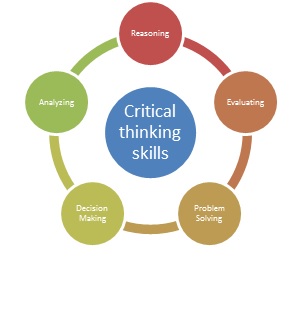
Questioning can be an effective teaching strategy when we move beyond asking students to remember and involve higher level thinking skills, such as analysis, synthesis or evaluation. To be truly effective, questions should elicit prior knowledge, but also challenge students to think deeper. One way to scaffold learning using questioning is through Bloom’s taxonomy. We are provided with a set of question stems to help in developing guided opportunities. Dr. RobertMarzano, CEO of Marzano Research Laboratory states that teachers who ask more questions, are more effective and by asking asking those that require high-order thinking skills, result in an increase in student learning. (Marzano).
Key Words & Question Stems:
http://www.educatorstechnology.com/2014/03/new-blooms-taxonomy-planning-kit-for.html
Bloom’s Taxonomy provides a hierarchy of levels that help in designing curriculum that can be effectively used to incorporate higher level thinking skills. The results of structuring lessons in this way are an improved attention to detail, increased comprehension and expanded problem solving skills. (Developing Questions for Critical Thinking, 2009) The available keywords and stems that can be used as guides to structuring questions and assignments can be found easily on the web. There are many interactive sites and graphics describing the elements, one such source is linked below:
http://farr-integratingit.net/Theory/CriticalThinking/revisedcog.htm
Effective questions are open ended, have multiple possibilities and allow for students to expand on their thinking. Low risk questions allow students the opportunity for brainstorming and discussion, which can be used to review, summarize and articulate knowledge. Different activities that can be used effectively with questioning strategies are: group/class discussions, classroom response systems (cell phones can be used), Blogs, short writing prompts and student created exam questions.
Strategies may also be needed to allow for all students to participate in classroom discussions, like using Popsicle sticks with student’s names on it to help keep track of who has already answered a question, or a talking stick/ball can be used to designate that only those student’s holding the item can talk. Students are more likely to participate if they know they won’t be usurped. Not all questions need to be part of a formal assessment. Informal Assessments where the teacher evaluates what the students have retained, what they don’t quite understand and address common misunderstandings.
In an inquiry-training model, questioning strategies are incorporated to facilitate problem solving and the development of critical thinking. The model has students verifying the relationships between variables, and finally fully explain what happens. Ideally, as students gain experience working with questions, ultimately they will initiate their own questions in response to their own drives for meaning.
Dean, C. (2012). Classroom instruction that works research-based strategies for increasing student achievement (2nded.). Alexandria, Va.: ASCD.
Developing Questions for Critical Thinking. (2009, January 1). Retrieved April 9, 2015, from http://farr-integratingit.net/Theory/CriticalThinking/revisedcog.htm
Joyce, Bruce R.; Weil, Marsha; Calhoun, Emily (2014-06-05). Models of Teaching (9th Edition) Pearson.
Marzano, R. (n.d.). 9. Cues, Questions, and Advance Organizers. Retrieved April 9, 2015, from http://escmarzano.wikispaces.com/9. Cues, Questions, and Advance Organizers
New: Bloom’s Taxonomy Planning Kit for Teachers. (2014, March 28). Retrieved April 9, 2015, from http://www.educatorstechnology.com/2014/03/new-blooms-taxonomy-planning-kit-for.html
Using Effective Questions. (2014, July 16). Retrieved April 9, 2015, from http://www.cte.cornell.edu/teaching ideas/engaging-students/using-effective-questions.html